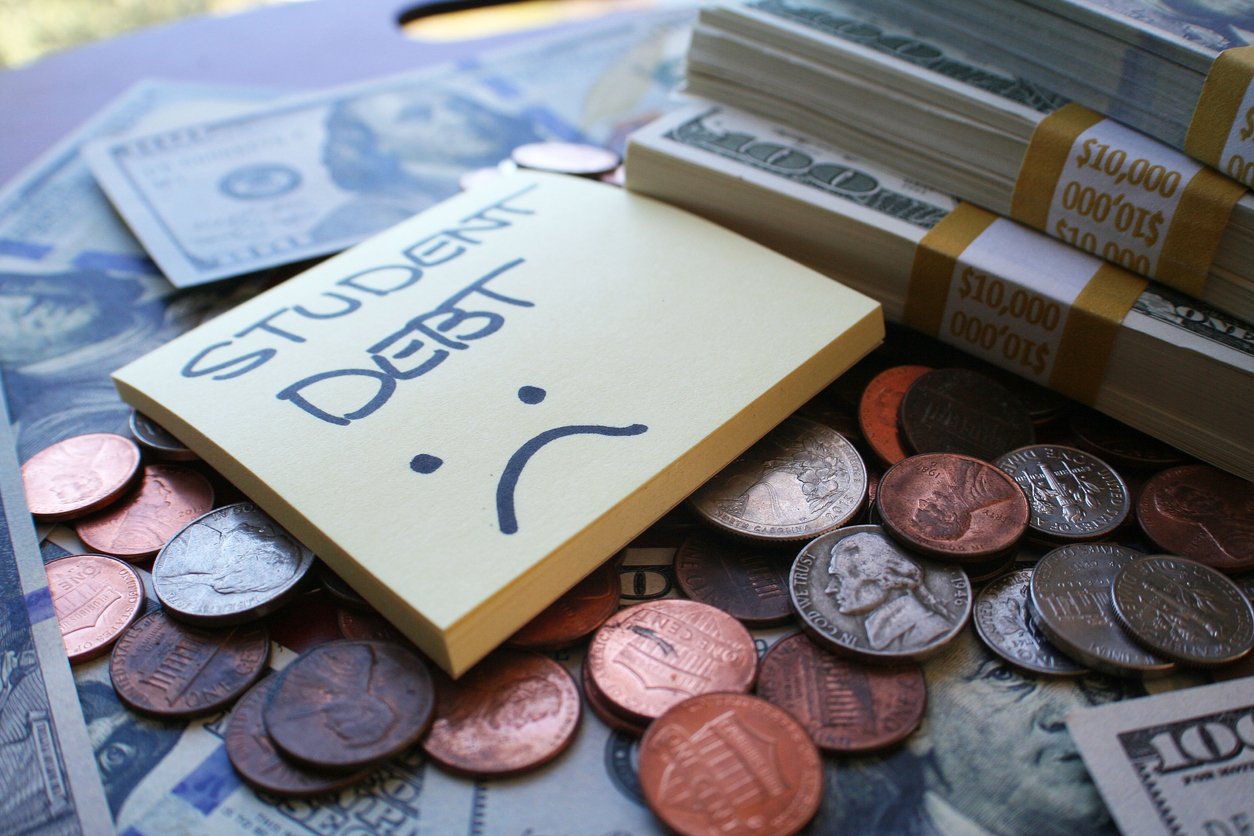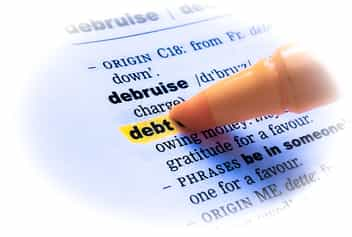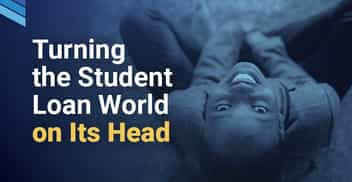
How Did We Get Here? The History of Student Loans
In his inaugural address on March 4, 1801, Thomas Jefferson said, “Let history answer this question.” Jefferson, of course, would have not envisioned a future for his beloved United States, that included $1.6 trillion dollars in student loan debt. How we got “here” entails a tragic tale of roots, recession, and resolutions. So, how DID we get here?
The Root of It All
Sixteen years after the Mayflower arrived at Plymouth Rock, the seeds were planted for post-secondary education in the US, with the commencement of Harvard College. The Harvard Loan Fund was established in 1848. An endowed fund, primarily bankrolled by alumni, it allowed students to apply for loans on their first day of classes.
Prior to 1769, colonial America produced 9 colleges that still exist today. They were geared toward educating young Puritan men and were funded by the colony or England. It wasn’t until the late 18th and early 19th centuries that the college-building boom began, increasing the number of US colleges from 25 in 1800 to 241 in 1860.
The Route to the Great Recession
History shows us the way society has changed and not changed; it provides us with a context for the situation in which we now find ourselves. Woven into the student loan debt story are dates and events that became the fabric of this tattered narrative.
The early 1900s saw an uptick in the number of those attending college. For the first time, people were seeking education for reasons unrelated to religious vocation. Most who matriculated were white men from wealthy families. In 1919, 598,000 were enrolled in US colleges; today that number is 19.7 million students. The US Census Bureau statistics recorded 4.1 million students registered in graduate schools in 2020.
As World War II was coming to an end, the GI Bill was signed. Following the bill’s passage in 1944, 8 million veterans enrolled in college. Fourteen years later, President Eisenhower signed the National Defense Act which provided tuition grants and loans to non-veterans; a response to the need for increased technology education to match the Soviet Union’s space and weapons advancements.
Lyndon B. Johnson followed with the Higher Education Act of 1965, which provided grants to students based on their income. The Guaranteed Student Loan Program (also known as the Federal Family Education Loan Program) allowed banks and private institutions to provide government-subsidized and guaranteed loans to students.
Yes, I can feel you losing interest. The story behind our country’s student loan debt isn’t terribly engaging. Stick with the story though, we are nearing the climax. The period from 1970 – 2005 included a number of changes, which allowed for more college enrollees:
- 1972 – The Basic Education Opportunity Grant, now known as the Pell Grant, was created.
- 1980s – During the Reagan era and the Tax Revolt of the 1980s, states passed expenditure limitations, resulting in the decline of highly state-subsidized college educations. Education Amendments of 1980 created the Federal PLUS Loan (for parents of undergraduates who have exhausted their Federal Stafford Loan eligibility).
- 1991 – The web opened to the public, allowing for internet use and online education.
- 1992 – The Higher Education Amendments of 1992 create FAFSA, the Direct Lending Program, and unsubsidized Stafford Loans.
- 1993 – The Student Loan Reform Act was signed by Congress, allowing the government to loan money to students directly, instead of through a private lending organization.
- Early 2000s – Online education soared.
- 2005 – The Higher Education Reconciliation Act addressed an array of student loan related topics, including consolidation loans, interest rates, PLUS loans for graduate or professional students, and teacher loan forgiveness.
- 2006 – 3.5 million students were taking at least one class online.
- 2007 – Signed by President Bush, The College Cost Reduction and Access Act made student loan repayment more affordable by creating income-based repayment plans and Public Service Loan Forgiveness.
The Great Recession and Student Loans
Ah…2008. The financial world changed dramatically. Fifty companies exited the private student loan market. In March of that year, student loan debt stood at $619 billion dollars (it has more than doubled since then).
During the years prior to the financial crisis, enrollment soared at America’s colleges and universities. Between 2000 and 2010, the number of students attending private colleges increased by 329%. The word “crisis” was first used in the spring of ’08 to describe student loan debt. What happened in 2008 that launched the story of student loan debt into the skyrocket it is today?
In layman’s terms, here’s the most concise and understandable way the financial crisis of 2008 can be explained (and I’m telling you, even kidzsearch.com, a children’s online encyclopedia was hard to follow):
The 1980s through 2007 was a period of low inflation and stability in the US. Households were willing to take more risks, as were financial institutions. Interest rates were low, and people bought houses. Banks began lending to folks with low-credit worthiness. Home prices had increased 130% between 1990 and 2007. People began to default on their mortgage loans and foreclosures ensued. Banks could not recover their losses. The credit market dried up and the federal government provided bailouts to temper the financial decline. The stock market tumbled. All this led to a world-wide recession. Jobless rates rose steeply, peaking at 10% in October of 2009, with more than 15 million unemployed in the US.
The Effect of the 2008 Recession on Student Loans
State budgets plunged. Legislatures were forced to make cuts. What made the chopping block? Higher education. 43 states cut college and university expenditures and the level of state funding has not yet returned to pre-recession levels.
States provide most of their higher education funding in the form of general support for institutions, with smaller amounts appropriated for research and financial aid. The funding decline has contributed to higher tuition as colleges have had to balance budgets by trimming faculty, limiting course offerings and student services, or closing altogether. Just over 50% of a public college or university’s budget came from state funding.
According to the Center on Budget and Policy Priorities, the price of attending college has risen significantly faster than what families can afford. During the 1970s and 1980s, tuition costs and incomes grew more rapidly than inflation, but by 1990, tuition prices surpassed what household incomes could afford to pay. Between 1973 and 2015, average inflation-adjusted public college tuition had increased by 281%, while the median household income had only grown by 13%.
As tuition costs skyrocketed following the recession, federal financial aid increased. We could place the blame, for student loan debt on any number of factors, but these three make the most sense: Increased tuition rates. Reduced State Spending. Borrower behavior. That last one, we haven’t touched on. No one likes to take the blame.
We are a nation of spenders; of wanting what we want NOW; without much thought given to the consequences. The Consumer Federation of America maintains that only one-third of the US population lives within their means. Our “instant gratification” attitude sets us up for a real wake-up call, later down the road.
Here’s the scenario: You want to go to college. You want to go to a particular college. You are willing to take out student loans because –
- You don’t have to think about paying them back for at least four years.
- You are sure your income, after college, will be more than enough to cover monthly student loan payments.
Readers, remember – there are over 44 million borrowers with student loan debt. We are all in this boat together, paddling along, hoping to reach the next shore, all the while bailing bucketsful of money to send to Loan Servicers. Imagine Lake Michigan with 44 million small rowboats, each with an oarsman and a pail. We are not alone and Impact Capital Funds continues to provide a simple rotating light to guide us to a safe harbor.
Resolving the Student Loan Crisis
The tide is shifting. While student loan debt in the US is now $1.6 trillion dollars, there are solutions to reducing the amount a borrower owes. Consider refinancing with Impact Capital Funds, a company that understands the needs of our clients and serves them with compassion.
The evolution of student loan debt, and its long history do not offer us a looking glass; a glimpse of what the future might look like in this space, but one thing remains the same: student loans provide an opportunity for people to attend college.
Thomas Jefferson advocated for the expansion of higher education opportunities. He argued that our country needed an educated citizenry. In a letter to John Adams in 1816, Jefferson wrote, “I like the dreams of the future better than the history of the past.” We know how we arrived here by looking at the history of student loan debt; now, let’s dream of a better future.



